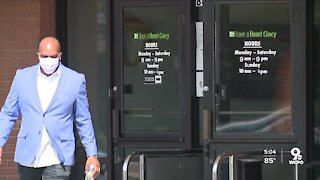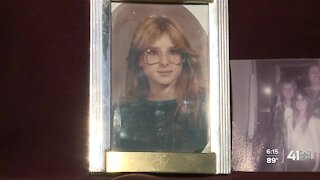Premium Only Content

Rare audio of indigenous languages saved by invention 100 years later
Optical scan technology is helping researchers at the University of California (UC), Berkeley, preserve audio of 78 indigenous California languages, most of which were recorded more than a century ago. The recordings are on approximately 2,700 wax cylinders that are now barely audible due to issues such as mold. These are the only known sound recordings for several of the languages, and in many other cases, the recordings include unique speech practices and otherwise unknown stories and songs.
With support from the National Science Foundation (NSF), linguist Andrew Garrett, digital librarian Erik Mitchell and anthropologist Ira Jacknis, all of UC Berkeley, are restoring these recordings. The researchers are using a non-invasive optical scanning technique that was developed by Lawrence Berkeley National Laboratory physicists Carl Haber and Earl Cornell. The collaboration with Haber and Cornell is enabling the NSF-funded research team to transfer all 100 hours of audio content from the wax cylinders and improve the recordings, finally making it possible to figure out which language is being spoken and what's being said.
The rich Native American cultural collection will ultimately be accessible to indigenous communities as well as to the general public and scholars. The linguistic diversity of the world's estimated 7,000 languages is immense. Modern technologies like this one unlock the documentation to enable new community uses and scientific investigations.
This research was co-funded by the National Endowment for the Humanities; grant number PD-230659-15.
NSF support was provided by award #1500779, "Linguistic and ethnographic sound recordings from early twentieth-century California: Optical scanning, digitization, and access."
Credit: National Science Foundation
-
 4:26
4:26
Ufomania - the truth is out there
5 years agoTime traveler who spent 2 years in the year 2749 tells all
2.1K1 -
 3:28
3:28
KJRH
5 years ago4 Years Later: Terence Crutcher Shooting
340 -
 4:03
4:03
KJRH
5 years ago4 Years Later: Tulsa Race Relations
53 -
 3:49
3:49
KJRH
5 years agoTerence Crutcher: Four years later
181 -
 2:46
2:46
WFTX
5 years agoMLK's Dream 57 years later
38 -
 0:45
0:45
Buzzvideos - EN
5 years agoSiblings finally meet 50 years later
85 -
 0:48
0:48
WFTX
5 years agoRemains of teen identified 39 years later
126 -
 2:10
2:10
WCPO
5 years agoHow's Ohio's medical marijuana industry, four years later?
69 -
 1:49
1:49
WFTS
5 years agoSoldiers laid to rest 100 years later
11 -
 2:41
2:41
KSHB
5 years agoMother still searching for daughter 35 years later
77